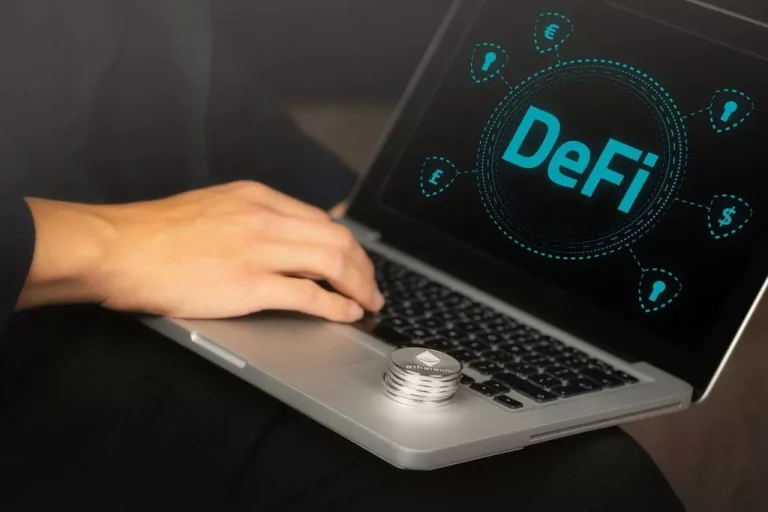Selasa, Agustus 27th, 2024
now browsing by day
Algorithmic Trading Strategies: Basic to Advance Algo Overview
Content
Every computerized device uses Decentralized finance algorithms to perform its functions in the form of hardware- or software-based routines. Of course, like all investments, higher returns typically entail taking on higher risk. The regulatory authorities always install circuit breakers, limiting the functionality of algo-trades. In addition, the liquidity provided by algo-traders can almost disappear instantly or in seconds.
The 10 Best Algorithmic Trading Software & Platforms in 2025

For example, stocks tend to revert to the mean after https://www.xcritical.com/ a large move while interest rate futures tend to trend for a long time due to global monetary policies. While many programs can help with pre-coding algorithms, your odds of success are far higher if you understand coding basics. A special class of these algorithms attempts to detect algorithmic or iceberg orders on the other side (i.e. if you are trying to buy, the algorithm will try to detect orders for the sell side). In finance, delta-neutral describes a portfolio of related financial securities, in which the portfolio value remains unchanged due to small changes in the value of the underlying security. Algorithmic trading provides a more systematic approach to active trading than methods based on trader intuition or instinct.
Basic Strategies: The Building Blocks
Algos can negatively impact the market when calibrated incorrectly, generating substantial price disruptions. They can also be overfitted to past spot algo trading data, driving underperformance when matched against real-world scenarios. With the explosion of machine learning, natural language processing, and alternative data sources, algorithms can now incorporate information that goes beyond just price and volume. They may “read” earnings reports, parse social media sentiment, or analyze satellite imagery to gauge supply chain activity. Suppose a trader follows a trading criterion that always purchases 100 shares whenever the stock price moves beyond and above the double exponential moving average.
Steps to Begin Algorithmic Trading
Algos and machine learning are also being used to optimize office operations at hedge funds, including for reconciliations. Finviz is not a trading platform — but it’s one of the best stock screening and backtesting platforms out there for algo traders. TradeStation is one of the best platforms to help traders implement complex and profitable algorithms. It offers straightforward yet powerful tools suitable for a wide range of traders. To tame the skill of trading, we need to develop an algorithm that simplifies the risk quantum in the financial market.
Algorithmic trading: What is it and how does it work?
In this comprehensive guide, I will explain in plain English the concept of algorithmic trading, its benefits, how it works, and a few practical tips to get you started. I will be leaving some trading strategies as examples for you to download at the end. That’s not the slow and steady investing game we humans are used to, and not necessarily one we should attempt to emulate. Algos allow you to remove the human element from your trading, something that keeps many traders from consistently making money. On top of that, you can enjoy speed, scalability, and diversification far beyond what is possible with manual trading. We recommend the Radical X13 Trading Computer, the world’s fastest Intel trading computer.

Many other programming languages, such as Python or R, can be used to develop mathematical algorithms that execute trades based on predefined rules. Algorithmic trading is a powerful tool that leverages technology and data analysis to automate trading activities. By understanding the basics and learning how to take advantage of its benefits, traders like you can potentially enhance their trading strategies and improve their overall performance. This allows traders to test a trading strategy before risking real money and trading capital.
Below is the equity curve result of the full strategy, combining both biases identified for the trading week of GBPUSD. In the evaluation, offering competitive commission rates, reliable customer support, and a wide variety of financial instruments to trade are also important. These are calculated based on standard deviation, which highlights areas where price is far from the mean.
Additionally, the platform’s proprietary coding language, EasyLanguage, makes it easier and faster to code your own strategies compared to something like Python or R. You can also create complex scans by combining both technical and non-technical parameters as well as multiple timeframes and data sources into a single scan. Next up we have the MACD which some traders use to signal divergences, but here we’ll focus on the lines instead and use it to show points where price may start reverting.
They’ve already done years of researching and backtesting to find the most powerful algos possible for their service. With the rise of fully electronic markets came the introduction of program trading, which is defined by the New York Stock Exchange as an order to buy or sell 15 or more stocks valued at over US$1 million total. There are additional risks and challenges such as system failure risks, network connectivity errors, time lags between trade orders and execution, and, most important of all, imperfect algorithms. The more complex an algorithm, the more stringent backtesting is needed before it is put into action. In the above example, what happens if a buy trade is executed but the sell trade does not because the sell prices change by the time the order hits the market?
Numerous algorithmic trading software options are available in the market, each with unique features and capabilities. Embracing a mindset of continuous learning and adaptation ensures that you stay ahead of the curve in algorithmic trading and maximize your potential for profitability. Implementing effective risk management strategies in algorithmic trading is crucial to protect your investment and minimize losses. System failures can occur due to technical glitches, software bugs, or hardware malfunctions.
Before deploying any trading algorithm, it’s critical to test it using historical data. Backtesting software enables traders to simulate how their strategies would have performed in the past and optimize them for future use. A popular software is TradeStation, the creators of EasyLanguage, which provides a user-friendly programming language that includes a wide range of built-in technical indicators, strategies and charting tools. There are many advantages to choosing TradeStation as the trading platform is directly connected with their brokerage services, offering platform and trading accounts an all-in-one solution. The disadvantage is that they don’t support trading the Forex market anymore. By following trends, trading algorithms can potentially enter trades to profit from the momentum of the market.
- This blog will explore what algorithmic trading is, how it works, the pros and cons, key strategies, and the essential tools needed to execute a successful algorithmic trading strategy.
- We recommend the Radical X13 Trading Computer, the world’s fastest Intel trading computer.
- Choosing a reputable brokerage firm is a must, as it can reduce the risk of potential problems with brokerage firms going bust with our money, as happened with MF Global.
- With trading and also with algorithmic trading, one of the major risks that traders face is market volatility and liquidity.
The technological advancements in trading seem to have strong and adequate data visualization capabilities that enable traders to understand price trends and market environment. Historical statistics and real time market feeds can be used for making statistics whereby the algorithms are used for matching of data through trading processes. Picture a fast-paced market where prices fluctuate every few seconds, requiring quick decision-making. It uses computer programs to analyze data and execute trades automatically based on predetermined criteria. Several types of trading algorithms help investors decide whether to buy or sell.
Successful algorithmic trading requires a sustainable edge, rigorous testing, sound risk management, and continuous refinement. Large institutions have the capital, talent, and infrastructure to maintain a competitive edge. Individual traders often rely on niche insights, creativity, and careful execution. The index fund portfolios undergo frequent changes, given the price fluctuations of the underlying assets. This rebalancing helps traders operate via algo trading to book deals for better returns.
Algorithmic strategies improve trading efficiency and profitability by removing human error and emotions from decision-making. Artificial intelligence (AI) and machine learning are at the forefront of transforming algorithmic trading. These technologies allow trading systems to evolve beyond static, rule-based algorithms by enabling them to learn and adapt dynamically from historical and real-time data. Machine learning models excel at analyzing vast and complex datasets, uncovering subtle patterns and trends that might elude traditional analytical methods. As these models improve, they offer enhanced predictive accuracy, allowing traders to anticipate market movements more effectively.
One strategy that some traders have employed, which has been proscribed yet likely continues, is called spoofing. This is done by creating limit orders outside the current bid or ask price to change the reported price to other market participants. The trader can subsequently place trades based on the artificial change in price, then canceling the limit orders before they are executed. The success of these strategies is usually measured by comparing the average price at which the entire order was executed with the average price achieved through a benchmark execution for the same duration.
 D5 Creation
D5 Creation